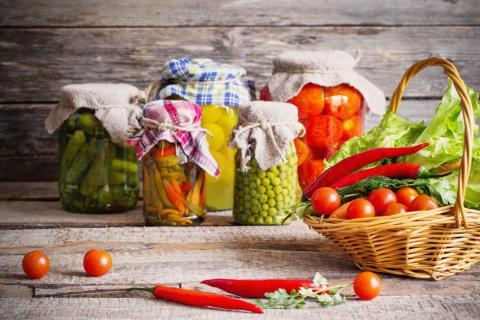
Earlier this week, I harvested the last of my vegetables: huge zucchini, dark purple eggplant, shiny red peppers, stalks and stalks of celery, and the remaining cherry tomatoes. Over the past few months, I’ve enjoyed the (literal) fruits of my efforts, dining on roasted vegetables, summer fresh salads, and pressed juices. While I love my veggies, I’ve grown more than I know what to do with, and you, too, might be in the same position: what the heck can I do with all of these veggies?
Fear not, fellow veggie lover! There are several ways to use the full bounty of your garden, both at home and in the community.
1. Sneak Veggies Into Recipes
Have you heard about shredding zucchini into oatmeal, grating cauliflower in place of rice, or hiding spinach, Swiss chard, and kale in smoothies? Along with sneaking vegetables into the dishes above, I also like to add excess summer squash to banana bread. Here’s an easy to make recipe, originally inspired by this recipe:
Summer Squash Banana Bread
- 1-1/2 cups fine-ground oat flour
- 1 cup almond flour
- 1 teaspoon baking powder
- 1/2 teaspoon baking powder
- 1/2 teaspoon Himalayan salt
- 1 teaspoon vanilla
- 1/2 tablespoon cinnamon
- 1 egg (omit egg to make vegan)
- 1/4 cup maple syrup
- 1/4 cup melted coconut oil or butter
- 1-2 mashed bananas
- 2 summer squash or zucchini
Directions:
- Mix dry ingredients in a large bowl.
- Grate summer squash and squeeze out excess water.
- Crack egg, add maple syrup, vanilla, coconut oil, bananas, and grated summer squash.
- Add wet ingredients to dry and mix.
- Add additions like walnuts, almonds, chocolate chips, or shredded coconut.
- Bake at 350°F for 30-40 minutes; the loaf will be ready when a toothpick comes out clean. Enjoy!
2. Donate Extra Veggies to the Food Bank or Local Soup Kitchen
Last week I volunteered at Small Potatoes Gleaning, an organization that “gleans” excess fruits and vegetables from local farms and donates them to the food bank. While gleaning—known as the practice of gathering food left in fields following harvest—might not be accessible to everyone on a large scale, anyone can glean their own garden. Does your yard have an apple or pear tree? Pick what you’ll consume and then take the rest to the local food bank. Before you donate, it’s important to call the organization. Not sure where to start? Check out Ample Harvest here to find out how to get involved.
3. Excess Greens for Small Critters
I love my greens, but when my Romaine lettuce started to rocket, I knew that I needed to pick it, and put it to use, fast. Luckily, I have two guinea pigs that love to much on excess greens, but if you don’t have small critters at home, consider donating small animal-friendly vegetables to your local animal shelter.
4. Preserve, Can or Freeze Veggies
After an afternoon spent picking blueberries this summer, I set aside a pint to eat and froze the rest, intent on enjoying fresh blueberries in smoothies and muffins this winter. Freezing can be done with a variety of fruit—think peaches, nectarines, bananas, strawberries, and blackberries—while other methods can be used for fruits like apples and pears. Try making applesauce and canning it to enjoy year-round. Pickling veggies is another option; I like green beans, but carrots, turnips, cucumbers, and even tomatoes can be quick pickled for now or later use (try this recipe).
5. Compost
Did you head on a trip and forget to harvest your zucchini? Did your beets go moldy? Did your radishes turn bitter? Vegetables that are no longer good for consumption can be composted to make fertile soil for the following year’s garden. Add these uneaten vegetables and other earth matter to manure or fertilizer and a layer with topsoil.
6. Gift Veggies to Friends & Neighbors
Few people will turn down homegrown vegetables and fruit, so consider making someone’s day by gifting them with the freshly picked fruits of your labor. Another option is to simply leave a basket of apples or pears in front of your house for neighbors and guests to take.
7. Attend a Barter Festival
During the summer months when produce is typically at its peak, many local towns and cities host events where people can bring their goods—whether vegetables, fruit, canned goods, and even bakery items—to barter. Need zucchini but have too many carrots? Trade. Want apples but don’t know what to do with extra plums? Trade. Another option is to place an ad in your local newspaper or on Craigslist to share your goods with those in the local community.
What do you do with extra vegetables? Which fruits or vegetables do you have a hard time using up? Let us know in the comments below!








